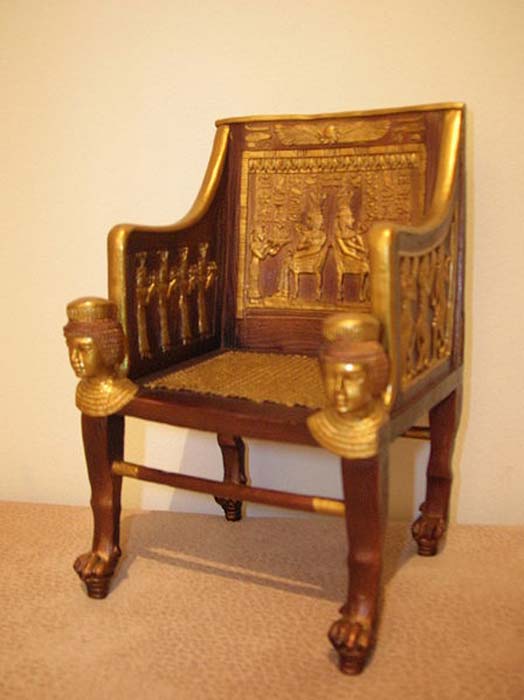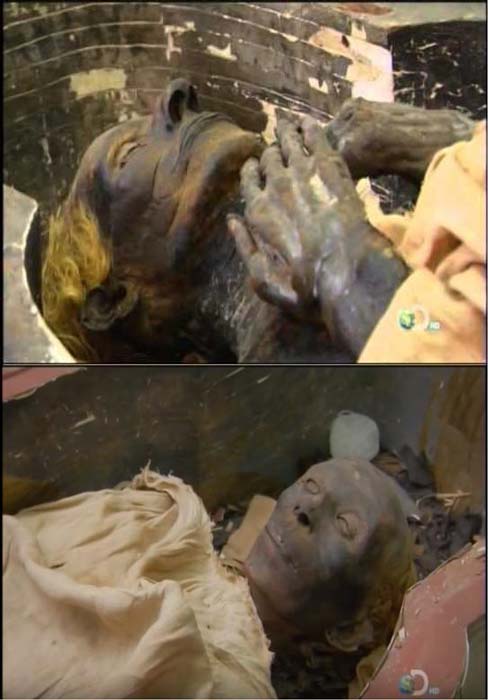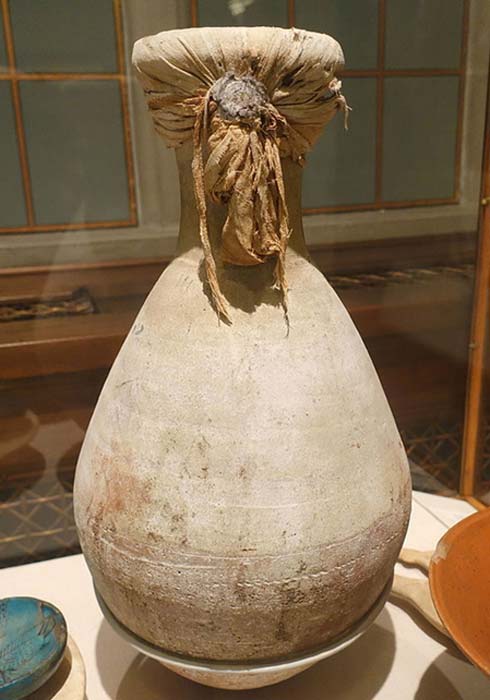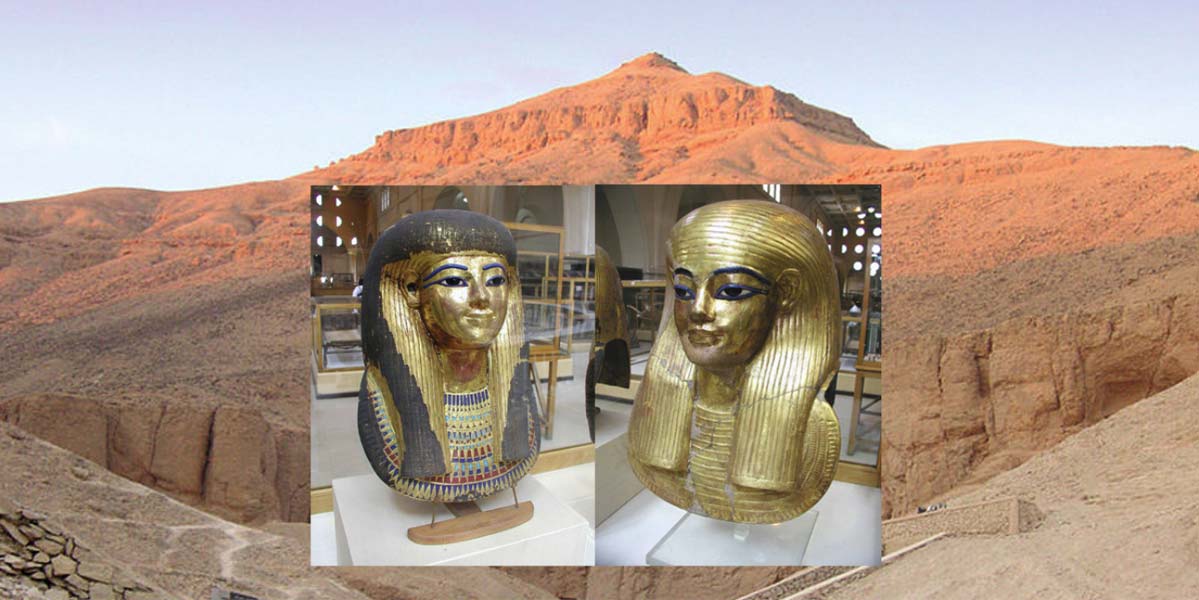The Magnificent Tomb and Treasures of Forgotten Couple Yuya and Tuya
The couple known as Yuya and Tuya (also known as Thuya or Tjuyu) gave Egyptian royalty at least one, but perhaps even two, famous officials. Their daughter Tiye was a wife of Amenhotep III, mother of Akhenaten, and the grandmother of Tutankhamun. The couple may have also had a son named Ay. Their family was important, but so was their tomb - one of the most magnificent discoveries in Egyptology.
Yuya and Tuya were Egyptian nobles whose names became famous again at the beginning of the 20th century. When their final home was discovered, researchers couldn't believe their eyes. That event took place almost two decades before Carter discovered the tomb of their grandson, and in those times it was perhaps the greatest golden treasure of Egypt.

Replica of the chair of Princess Sitamun (18th dynasty of Ancient Egypt), an artifact from the Tomb of Yuya and Tuya. (Alensha/CC BY SA 3.0)
The Tomb of a Forgotten Couple
The tomb, known as KV46, is found in the Valley of the Kings. The construction of the tomb is characteristic of the style of the 18th dynasty, and its walls were not decorated. Providing even less interest today is the fact that it now stands empty. Arthur Weigall wrote about the feelings connected with opening the tomb:
''Imagine entering a town house which had been closed for the summer: imagine the stuffy room, the stiff, silent appearance of the furniture, the feeling that some ghostly occupants of the vacant chairs have just been disturbed, the desire to throw open the windows to let life into the room once more. That was perhaps the first sensation as we stood, really dumbfounded, and stared around at the relics of the life of over three thousand years ago...''
- Tiye: One of the Most Influential Women of Ancient Egypt
- Daughter of Disaster: Unsung Ankhesenamun
- New Research Shows that Some Ancient Egyptians Were Naturally Fair-Haired
It was discovered in 1905 by James E. Quibell, who worked under the direction of Theodore Davis, a man who was a blessing and curse for early excavations in Egypt. Davis treated the sites in Egypt like an amusement park – he excavated too much, too fast, and too often - without thought about saving heritage. The couple’s tomb may have been robbed three times during ancient times. The priests checked the state of damage and sealed it at least two times. However, it seems that the tomb robbers were not interested in the treasures which are so priceless to archaeologists.

Yuya's large outer coffin as discovered in 1905 (Public Domain) and the gold gilded third, innermost coffin of Tuya (Hans Ollermann/CC BY 2.0) from Tomb KV46 in the Valley of the Kings.
The burial chamber isn't anything unusual, it is a typical chamber from the 18th dynasty. However, something unique about this tomb is the artifacts it held. The overwhelming treasures discovered inside the tomb contained everything that Egyptologists would dream of. First of all, there were the very well preserved mummies of Yuya and Tuya. Until now, they are some of the best preserved remains discovered in Egypt. However, the mummy of Tuya was damaged during the famous destruction at the museum in Cairo in 2011.

The mummies of Yuya and Tuya. (Youtube Screenshot)
The mummies were partly unwrapped but according to Quibell, Yuya’s features were perfectly preserved. He was overwhelmed by the magnificent face of a man who died thousands of years ago. He had blue glass and quartz eyes, which made his face look even more alive. The mummy was placed in a nest of four coffins. One of these was in a rectangular shape, while the other three were anthropoid. The faces of both mummies were covered with the impressive masks made of cartonnage – linen stiffened with plaster. The one which belonged to Tuya was broken, but later restored by Egyptologists.
Apart from the mummies, archaeologists discovered anthropoid coffins, a box coffin, mummy bands, headpieces, amulets, scarabs, a Canopy/Box Coffin, truncated cones, canopic chests, canopic jars, Osiris beds, shabtis, shabti boxes, shabti tools, magical statues, papyri, model coffins, scribe's palettes, Osiris cenotaphs, chariots, whipstocks, beds, a ba-bird, golden chairs, wigs and wig baskets, mirrors, sistrums, kohl tubes, mats, sandals, staves, pottery and stone vessels, jars with embalming products, meat boxes, remains of plants, jewelry, dummy vessels, small seals, and many other goods.
- Two 3,500-year-old tombs adorned with vivid paintings unearthed in Egypt
- Searching for a Family: The Mysterious Mummy of Maiherpri and His Special Tomb
- The Sins and Glories of the Pharaoh Ay

A baked clay food storage jar from the tomb of Yuya and Tuya. (Public Domain)
One of the most impressive of the artifacts discovered in the tomb was a complete and well-preserved chariot. It is believed that it may have been the best preserved chariot in the world. It was not decorated, but it is beautiful in its simplicity - with the spirals and rosettes in gilded plaster it is a striking artifact. Moreover, the jewelry boxes decorated with ivory, faience, and ebony were inscribed with golden letters.
It is interesting to note that some of the artifacts carry the names of Amenhotep III and his wife Tiye. It seems that Yuya and Tuya were not only the queen’s parents, but also very important people in the court. The chairs discovered in the tomb are as impressive as the ones found in Tutankhamun’s tomb. They are so magnificent, that one of them was used during the opening of the Suez Canal as a seat for Empress Eugenie. Fortunately, this mistake has not been repeated, and now all of the artifacts are located in the museum.

An elaborate box from Yuya and Tuya's tomb bearing Amenhotep III's cartouche. (Tjflex2/CC BY NC ND 2.0)
Parents of Gods
Yuya and Tuya were very important people in Amenhotep III’s court. They had at least one famous child – Queen Tiye, who became one of the key women in the Theban court. Additionally, it seems that they were also the parents of the pharaoh Ay - so they could have been Nefertiti and Mutnodjimet’s grandparents.
Without the artifacts, their tomb is of little interest these days, however it continues to be a monument in the memory of the important couple. They are the ancestors of people who created some of the most fascinating stories in ancient Egypt, and it is possible that future researchers may add even more details to their story.
Top Image: Gilded cartonnage mummy masks of Tuya (Jon Bodsworth) and Yuya (Jon Bodsworth) Queen Tiye’s parents. A view of the Valley of the Kings near Luxor, Egypt. (Nikater/CC BY SA 3.0)
References:
L. Oakes, The Illustrated Encyclopedia of the pyramids, temples & tombs of Ancient Egypt, 2006.
N. Reeves, R.H. Wilkinson, The Complete Valley of the Kings, 2008.
The Treasures of Yuya and Tuyu, available at:
http://anubis4_2000.tripod.com/SpecialExhibits/YuyaTuyu.htm
Egypt: The Private Tomb of Yuya and Tjuyu (Tuyu) in the Valley of the Kings, available at:
http://www.touregypt.net/featurestories/yuyat.htm#ixzz4IpvVdhs1

















Comments
Has anyone commented on the placement of Yuya's hands ... is this not unique?
Hi,
The American Black is gone crazy!
He is claiming to be the REAL Israelite and also the REAL Egyptian!
The Nubians did have a lot of contact with Egypt, but could you shed some light on the DNA findings done on the mummies that have been found in Egypt?
This information is important for Black Americans, as he tries to find his place in the world.
Africa is a mess and places like the Congo and Liberia, have still cannibals running around killing and eating people! The Pygmy is endangered because of these cannibals and no one is coming to their aid.
Amazing preservation of his hair ! And with so may coffins, how did anypne expect their spirits be able to escape them ? :)